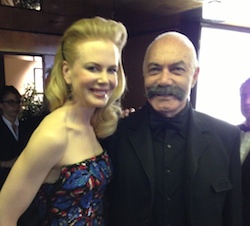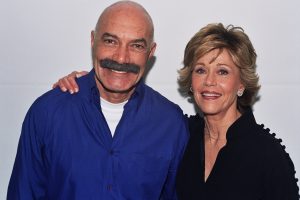Summary:
Actor Basil Rathbone was born as Philip St. John Basil Rathbone MC on June, 13 1892, and died July 21, 1967
Oscar Nominations: 2
1936: Supporting Actor, Romeo and Juliet; the winner was Walter Brennan
1938: Supporting Actor, If I Were King, the winner again was Walter Brennan
The English actor rose to prominence in the UK as a Shakespearean stage actor and appeared in more than 70 films, primarily costume dramas and swashbucklers.
Rathbone often portrayed suave villains or morally ambiguous characters, such as Mr. Murdstone in David Copperfield (1935) and Sir Guy of Gisbourne in The Adventures of Robin Hood (1938).
His most famous role was Sherlock Holmes in 14 Hollywood films made between 1939 and 1946 and in a radio series.
His later career included roles on Broadway, as well as TV work. He received a Tony Award in 1948 as Best Actor in a Play. He was also nominated for two Oscar Awards and was honored with three stars on the Hollywood Walk of Fame.
Rathbone was born in Johannesburg, South Africa, to British parents. His mother, Anna Barbara (née George), was a violinist, and his father, Edgar Philip Rathbone, was a mining engineer.
The Rathbones fled to Britain when Basil was three when his father was accused by the Boers of being a spy after the Jameson Raid. He was a distant cousin of Brevet Colonel Henry Rathbone, who was present at the assassination of Abraham Lincoln, and was seriously wounded trying to stop John Wilkes Booth.
Rathbone attended Repton School in Derbyshire from 1906 to 1910, where he excelled at sports. He was briefly employed by the Liverpool and Globe Insurance Companies, to appease his father’s wish that he has a conventional career.
In 1911, Rathbone made his first appearance on stage at the Theatre Royal, Ipswich, Suffolk, as Hortensio in The Taming of the Shrew, under the direction of Henry Herbert. In October 1912, he went to the US with Benson’s company, playing such parts as Paris in Romeo and Juliet, Fenton in The Merry Wives of Windsor, and Silvius in As You Like It.
Returning to Britain, he made his first appearance in London at the Savoy Theatre in 1914, as Finch in The Sin of David. He also appeared at the Shaftesbury Theatre as the Dauphin in Henry V. During 1915, he toured with Benson and appeared with him at London’s Court Theatre in December as Lysander in A Midsummer Night’s Dream.
During World War One, Rathbone was called up in 1915 via the Derby Scheme into the British Army as a private with the London Scottish Regiment, joining a regiment that also included Claude Rains, Herbert Marshall and Ronald Colman. After basic training with the London Scots in early 1916 he received a commission as a lieutenant in the 2/10th Battalion of the King’s Liverpool Regiment (Liverpool Scottish), where he served as an intelligence officer and attained the rank of captain. Basil Rathbone was twice the British Army Fencing Champ, a skill that would serve him well in movies and allow him to even teach actors Errol Flynn and Tyrone Power the finer art of swordsmanship.
During the Summer Festival of 1919, he appeared at Stratford-upon-Avon with the New Shakespeare Company playing Romeo, Cassius, Ferdinand in The Tempest and Florizel in The Winter’s Tale; in October he was at London’s Queen’s Theatre as the aide de camp in Napoleon, and in February 1920 he was at the Savoy Theatre in the title role in Peter Ibbetson with huge success.
During the 1920s, Rathbone appeared regularly in Shakespearean and other roles on the British stage. He began to travel and appeared at the Cort Theatre, New York, in October 1923 in a production of The Swan opposite Eva Le Gallienne, which made him a star on Broadway.
He toured in the US in 1925, appearing in San Francisco and New York. He was in the US again in 1927 and 1930 and again in 1931, when he appeared on stage with Ethel Barrymore.
He continued his stage career in Britain, returning late in 1934 to the US, where he appeared with Katharine Cornell in several plays.
Rathbone was once arrested in 1926 along with every other member of the cast of The Captive, a play in which his character’s wife left him for another woman. Though the charges were eventually dropped, Rathbone was angry about the censorship, holding that homosexuality needed to be brought into the open.
He began his film career in 1921 in silent movies and appeared in 1923’s “School for Scandal”, later appearing in The Masked Bride, appeared in a few silent films, and played the detective Philo Vance in the 1930 film The Bishop Murder Case, based on the best selling novel. In the film there is a coincidental reference to Sherlock Holmes. Like George Sanders and Vincent Price after him, Rathbone made a name for himself in the 1930s by playing suave villains in costume dramas and swashbucklers, including David Copperfield (1935) as the abusive stepfather Mr. Murdstone; Anna Karenina (1935) as her distant husband, Karenin; The Last Days of Pompeii (1935) as Pontius Pilate; Captain Blood (1935); A Tale of Two Cities (1935), as the Marquis St. Evremonde; The Adventures of Robin Hood (1938) playing his best-remembered villain, Sir Guy of Gisbourne; The Adventures of Marco Polo (1938); and The Mark of Zorro (1940) as Captain Esteban Pasquale. He also appeared in several early horror films: Tower of London (1939), as Richard III, and Son of Frankenstein (1939), portraying the dedicated surgeon Baron Wolf von Frankenstein, son of the monster’s creator, and, in 1949, was also the narrator for the segment “The Wind in the Willows” in the Disney animated feature, The Adventures of Ichabod and Mr. Toad.
Swordsmanship
He was admired for his swordsmanship (especially fencing). He fought and lost to Errol Flynn in a duel on the beach in Captain Blood and in an elaborate fight sequence in The Adventures of Robin Hood.
He was involved in sword fights in Tower of London, The Mark of Zorro, and The Court Jester (1956). Despite his real life skill, Rathbone won only twice on screen, against John Barrymore in Romeo and Juliet (1936) and against Eugene Pallette in The Mark of Zorro (1940).
Oscar Nominations
Rathbone earned Academy Award nominations for Best Actor in a Supporting Role for his performances as Tybalt in Romeo and Juliet (1936) and as King Louis XI in If I Were King (1938), a truly remarkable, comedic performance as the wily king. In The Dawn Patrol (1938), he played one of his few heroic roles in the 1930s, as a Royal Flying Corps (RFC) squadron commander brought to the brink of a nervous breakdown by the strain and guilt of sending his battle-weary pilots off to near-certain death in the skies of 1915 France. Errol Flynn, Rathbone’s perennial foe, starred in the film as his successor when Rathbone’s character was promoted.
According to gossip, Rathbone was Margaret Mitchell’s first choice to play Rhett Butler in Gone with the Wind. Rathbone actively campaigned for the role, however, but to no avail.
Despite his screen success, Rathbone always wished to be remembered for his stage career, citing Romeo as his favorite role.
Sherlock Holmes Film Series
Rathbone is most widely recognised for his many portrayals of Sherlock Holmes. In a radio interview Rathbone recalled that Twentieth Century-Fox producer and director Gene Markey, lunching with producer-director-actor Gregory Ratoff and 20th Century-Fox mogul Daryl Zanuck at Lucey’s Restaurant in Hollywood, proposed a film version of Sir Arthur Conan Doyle’s The Hound of the Baskervilles. When asked who could possibly play Holmes, Markey incredulously replied, “Who?! Basil Rathbone!” The film was so successful that Fox produced a sequel which appeared later in 1939. Interest in Holmes cooled at Fox, but Universal Pictures picked up the character, and twelve feature films were made between 1941 and 1944 for release until 1947, all of which co-starred Nigel Bruce as Dr. Watson.
The first two films, The Hound of the Baskervilles and The Adventures of Sherlock Holmes (both by Fox in 1939), were set in the late Victorian times of the original stories. The later instalments, produced by Universal, beginning with Sherlock Holmes and the Voice of Terror (1942), were set in contemporary times. The first three had World War II-related plots.
Rathbone and Bruce also reprised their film roles in a radio series, The New Adventures of Sherlock Holmes, in October 1939. Rathbone appeared in the radio series as long as the film series was active, but after the films lapsed in 1946, Rathbone ceded his radio part to Tom Conway.
The many Holmes sequels typecast Rathbone, and he was unable to shake himself from the shadow of the Great Detective despite appearing in other films. Resenting the typecasting, Rathbone refused to renew his contract at MGM and returned to Broadway.
In later years, however, Rathbone willingly made the Holmes association, as in a TV sketch with Milton Berle in the early 1950s, in which he donned the deerstalker cap and Inverness cape.
In the 1960s, dressed as Holmes, he appeared in a series of TV commercials for Getz Exterminators (“Getz gets ’em, since 1888!'”).
In the 1950s, Rathbone appeared in two spoofs of his swashbuckling villains: Casanova’s Big Night (1954) opposite Bob Hope and The Court Jester (1956) with Danny Kaye.
He appeared on TV game shows, in the Humphrey Bogart comedy We’re No Angels (1955) and in John Ford’s political drama The Last Hurrah (1958).
Rathbone also appeared on Broadway. In 1948, he won a Tony Award for Best Actor for his performance as the unyielding Dr. Austin Sloper in the original production of The Heiress, which featured Wendy Hiller as his timid, spinster daughter.
To support his second wife’s lavish lifestyle, he appeared as a panelist on the television game show The Name’s the Same (in 1954), and took roles in cheap thrillers, such as The Black Sleep (1956), Queen of Blood (1966), The Ghost in the Invisible Bikini (1966, wherein the character ‘ Eric Von Zipper’ played by Harvey Lembeck jokes, “That guy looks like Sherlock Holmes”), Hillbillys in a Haunted House (1967, also featuring Lon Chaney Jr and John Carradine).
His last, low budget feature was the Mexican horror film, “Autopsy of a Ghost” in 1968.
Rathbone’s readings of stories and poems of Edgar Allan Poe are collected together with readings by Vincent Price in Caedmon Audio’s The Edgar Allan Poe Audio Collection on CD.
In four Caedmon albums Rathbone revisited his characterization of Sherlock Holmes. The first, recorded in 1963), is a straight narration of the tale. In the rest he changes his voice for each character, including a rendition of Nigel Bruce for Dr Watson.
Rathbone also made many other recordings, of everything from a dramatized version of Oliver Twist to a recording of Prokofiev’s Peter and the Wolf (with Leopold Stokowski conducting) to a dramatized version of Charles Dickens’s A Christmas Carol.
TV
On TV he appeared in two musical versions of Dickens’s A Christmas Carol. In 1954, he played Marley’s Ghost opposite Fredric March’s Scrooge, and in the original 1956 live action version of The Stingiest Man In Town, he starred as a singing Ebenezer Scrooge.










